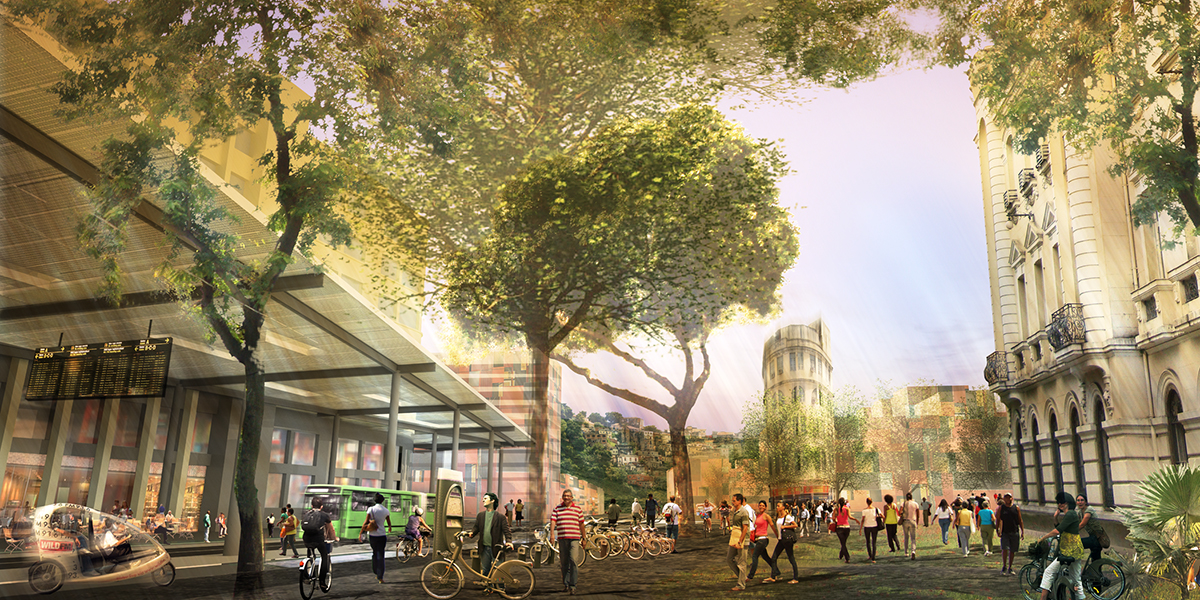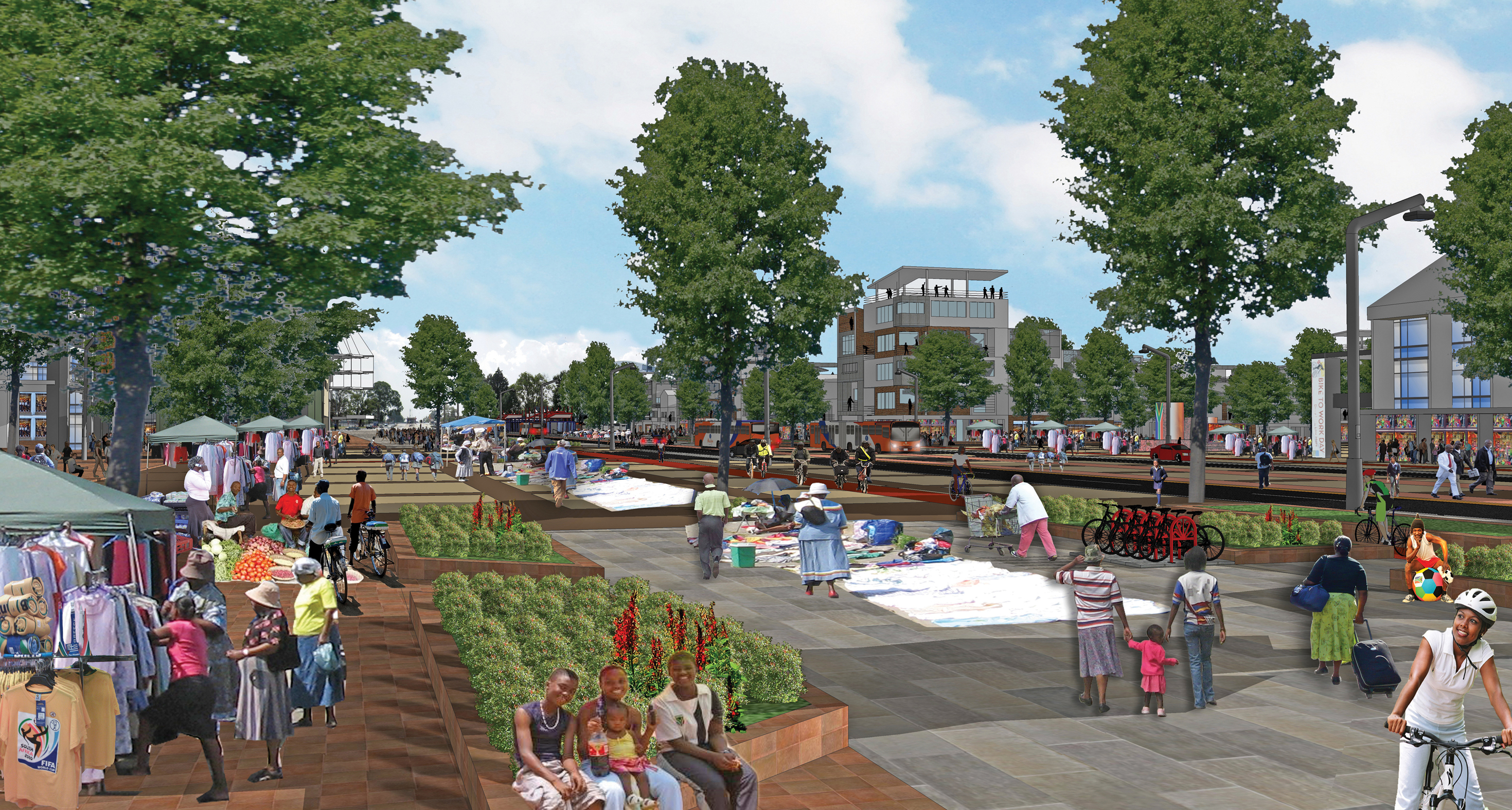It's about time we give our cities a makeover.
With 60% of the world's population projected to live in urban areas by the year 2030, city officials and urban planners the world over are talking about how to redesign for a more crowded future.
Changing the way we get around is the key, according to the Institute for Transportation and Development Policy (ITDP), an organization that promotes sustainable transportation solutions for the world's burgeoning cities. The ITDP is sponsoring a project called Our Cities Ourselves, which pairs ten world cities with ten leading architects. Each has come up with a redesign of a public space, hand-tailored to the challenges presented by each city. These designs will be presented at an exhibition, opening on June 24, at New York City's Center for Architecture.
Last week, WNYC reported on Michael Sorkin's plan for New York, drawing impassioned responses from commenters. The proposal calls for tearing down the FDR interchange that connects the highway to the Brooklyn Bridge, freeing the waterfront to be developed into a riverside park, and discouraging vehicle traffic downtown.
The plans presented in Our Cities Ourselves focus on designs that reduce reliance on cars while encouraging bicycle use and public transportation. Many of the designs include provisions for Bus Rapid Transit, or BRT in urban planner parlance, high-speed bus lines with dedicated lanes and train-like stations for getting on and off. BRT has been a hailed as a success in developing cities such as Bogota and Quito, where it is prohibitively expensive to build subway systems.
Below, take a look at the designs.
Achmedabad, India -- HCP Design and Project Management
Problem: In a large vacant area near the historic downtown, rickshaws, motorcycles, and cars have a stranglehold on transportation.
Proposal: Build pedestrian squares, BRT links to the city, and bicycle-friendly streets. The new foot-traffic encourages commercial development in the vacant area.
Before:
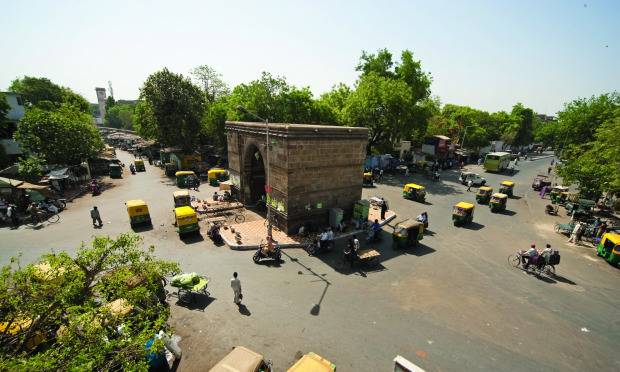
After:
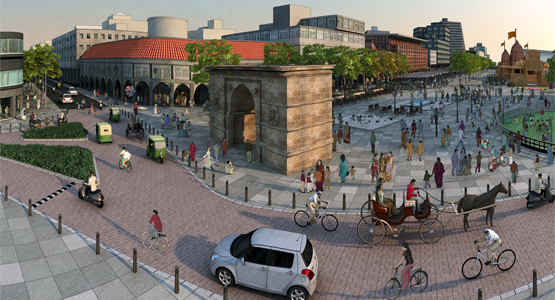
Budapest, Hungary -- Varos-Teampannon and Kozlekedes
Problem: On the banks of the Danube, a traffic-choked slice of waterfront roads disconnect the city from the river it's most known for.
Proposal: Keep the waterfront roads, but build them alongside underground parking lots. Development of elevated parkland restores access to the river for city residents.
Before:
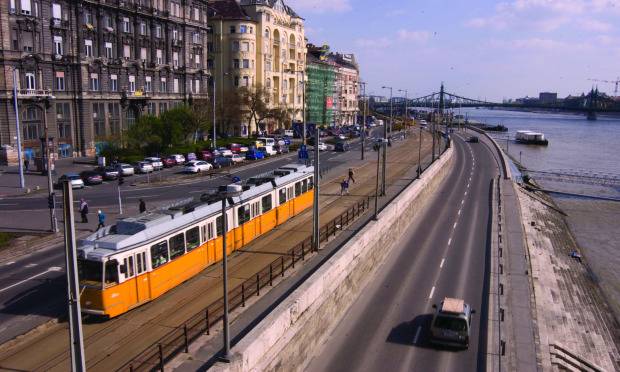
After:
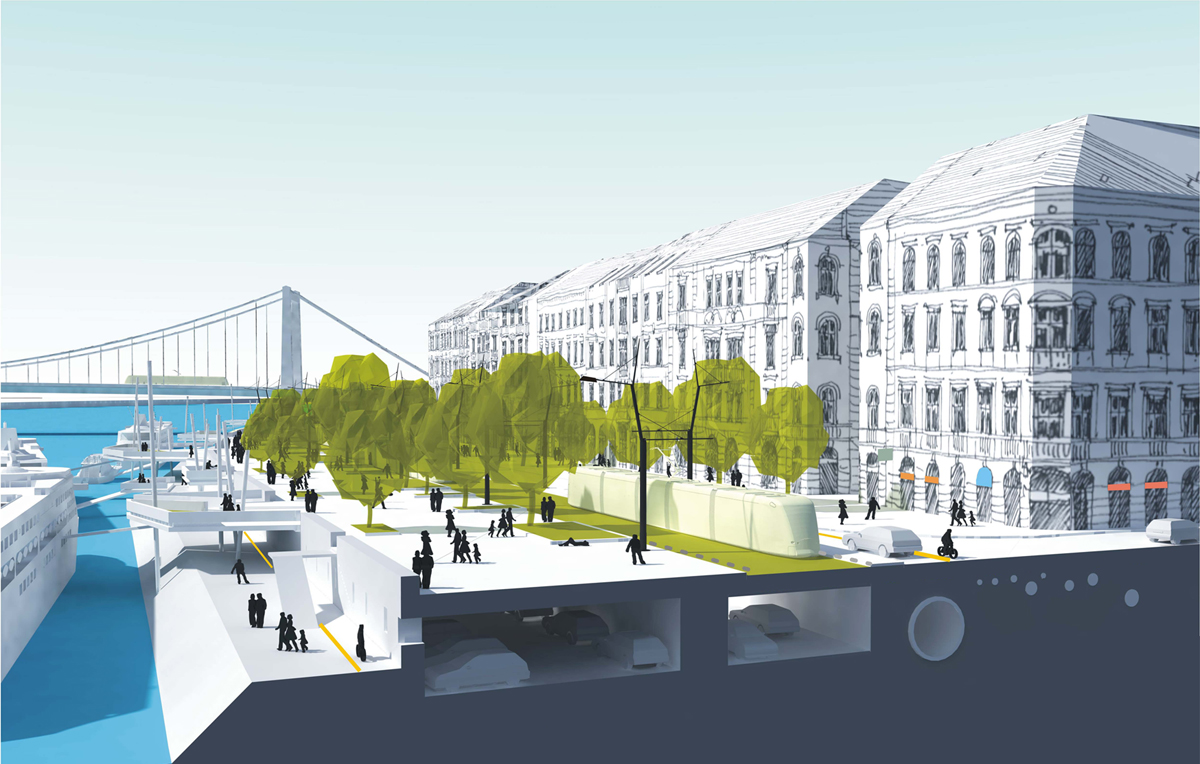
Buenos Aires, Argentina -- PALO Arquitectura Urbana
Problem: The neighborhood of La Boca, a dockside, working-class district and the birthplace of tango, is still suffering from neglect. Despite the development of a small section of colorful, corrugated-metal houses into a Disneyfied tourist attraction, the area is characterized by squatters and decrepit housing along the polluted Riochuelo river.
Proposal: A massive redesign with promenades and bike lanes on both sides of the river, linked by a new pedestrian bridge and water taxis. Transform old, street-level, freight train tracks into a bicycle boulevard flanked by new housing and commercial spaces.
Before:
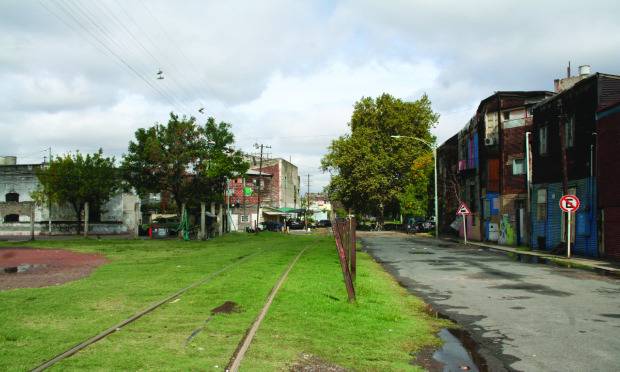
After:
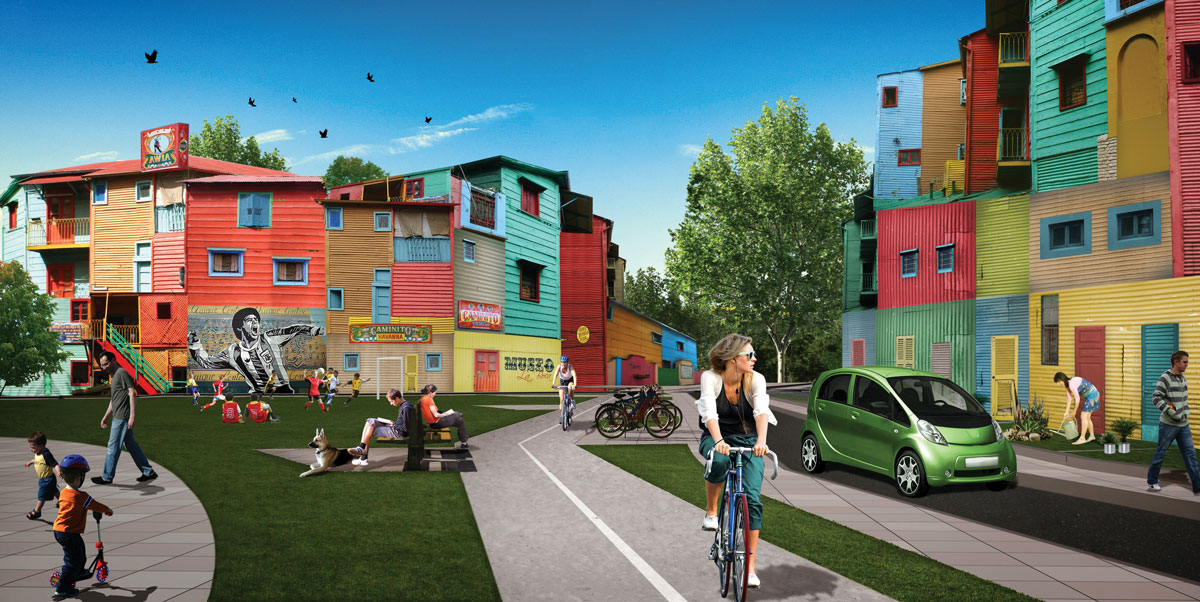
Dar Es Salaam, Tanzania -- Adjaye Associates
Problem: A waterfront is cut off from the city by a railroad and port machinery. The area is a hub for transportation via privately-owned minibuses.
Proposal: Reroute the railway and link the station with a new Bus Rapid Transit line. Meanwhile, develop the waterfront into pedestrian promenades.
Before:
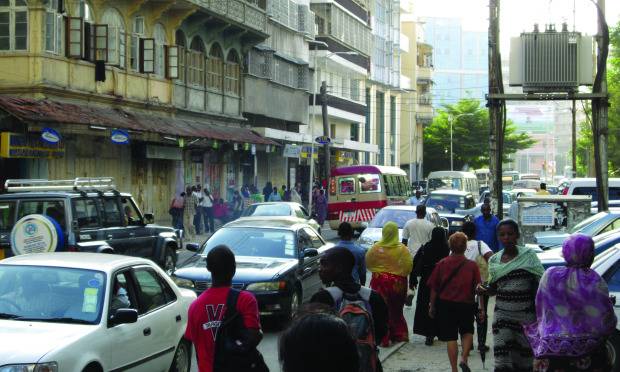
After:
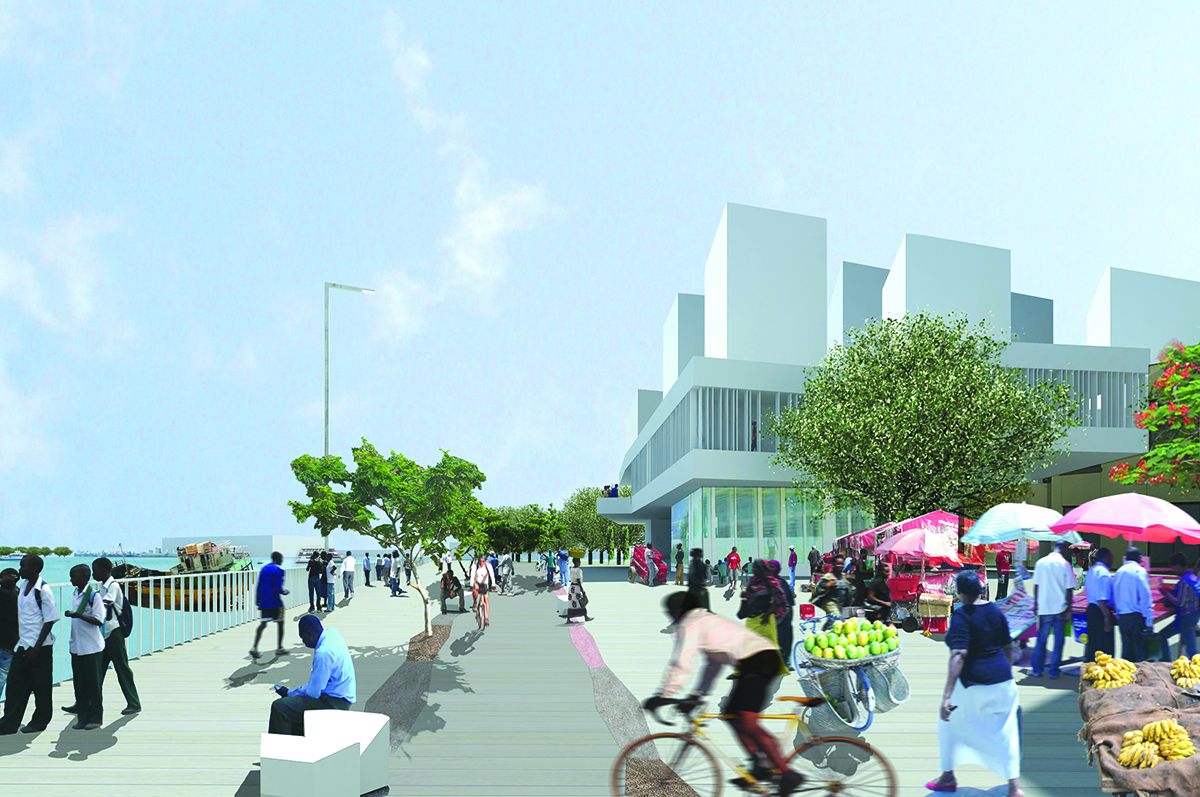
Guangzhou, China -- Urbanus Architecture & Design
Problem: An elevated highway runs down the middle of the Liwan district, bisecting the neighborhood.
Proposal: Inspired by New York's Highline, the idea is to turn the highway into an elevated pedestrian and bicycle walkway, while the road beneath will become a dedicated Bus Rapid Transit corridor. New shops and modernized housing will follow, and rooftop "skyways" will provide further recreational space.
Before:
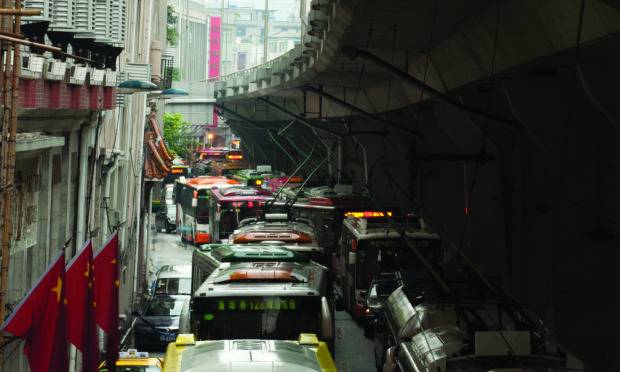
After:
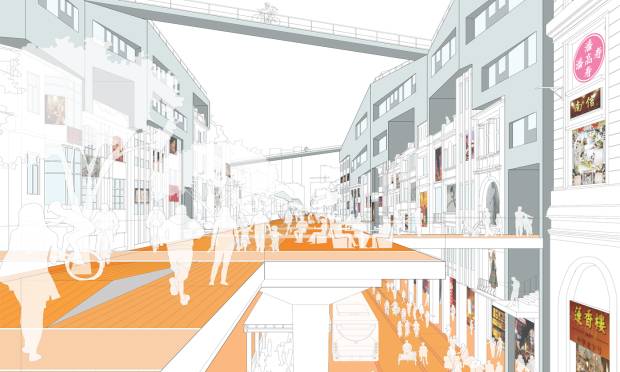
Jakarta, Indonesia -- Budi Pradono Architects
Problem: At a city transit hub in the Manggarai neighborhood, current development plans threaten to uproot local communities.
Proposal: Build around the communities. Create parks on the roofs of the train and BRT stations, and develop canal-side dirt paths into bicycle paths.
Before:
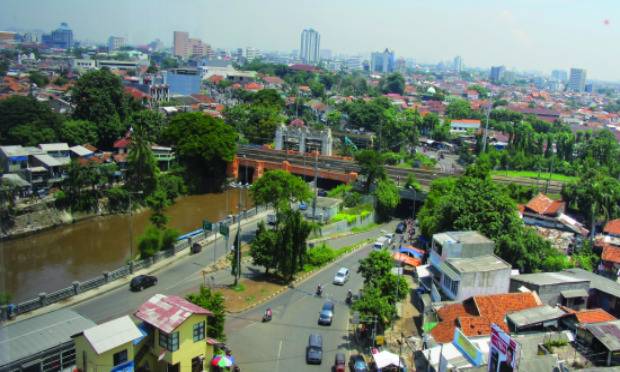
After:
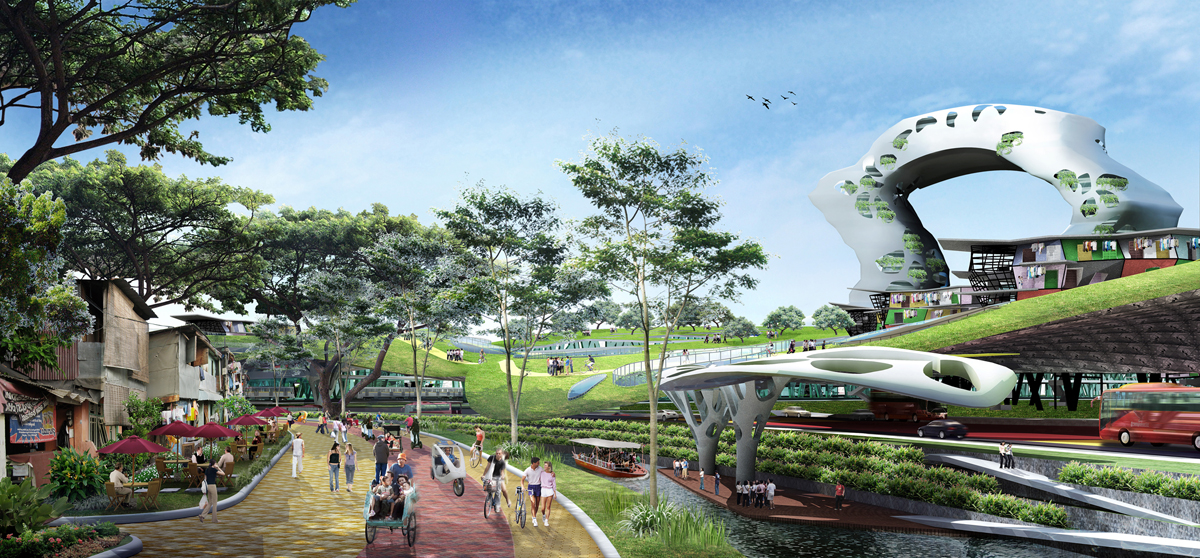
Johannesburg, South Africa -- Osmond Lange Architects, Ikemeleng Architects
Problem: A part of the Soweto Township known as Orland is symbolically important for South Africa because it was the site of the Soweto Uprising, a pivotal event in the struggle against apartheid. The area has new commuter rail and BRT stations, but they are not connected to each other.
Proposal: Connect the new transport links by creating attractive mixed-use spaces, encouraging people to walk between the stations. The spaces will include shops, restaurants, offices, and parks.
Before:

After:
Mexico City, Mexico -- arquitectura 911sc
Problem: With over 20 million residents and almost zero central planning, Mexico City is a transportation nightmare. In the neighborhood of Tacubaya, it is impossible to travel on foot due to criss-crossing highways filled with private cars and unregulated buses.
Proposal: Move traffic to underground roads, leaving above-ground roads dedicated to pedestrians, bicycles, and BRT. Put the unregulated buses into a single central station.
Before:
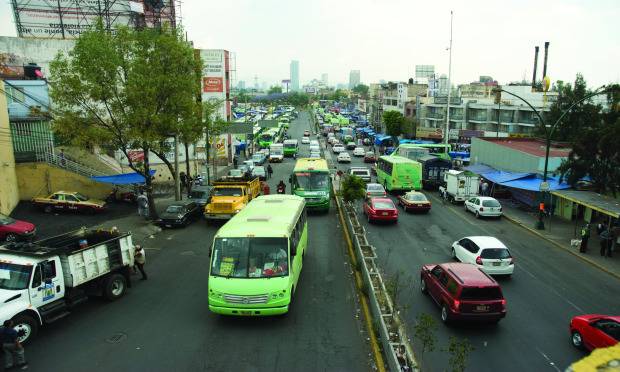
After:
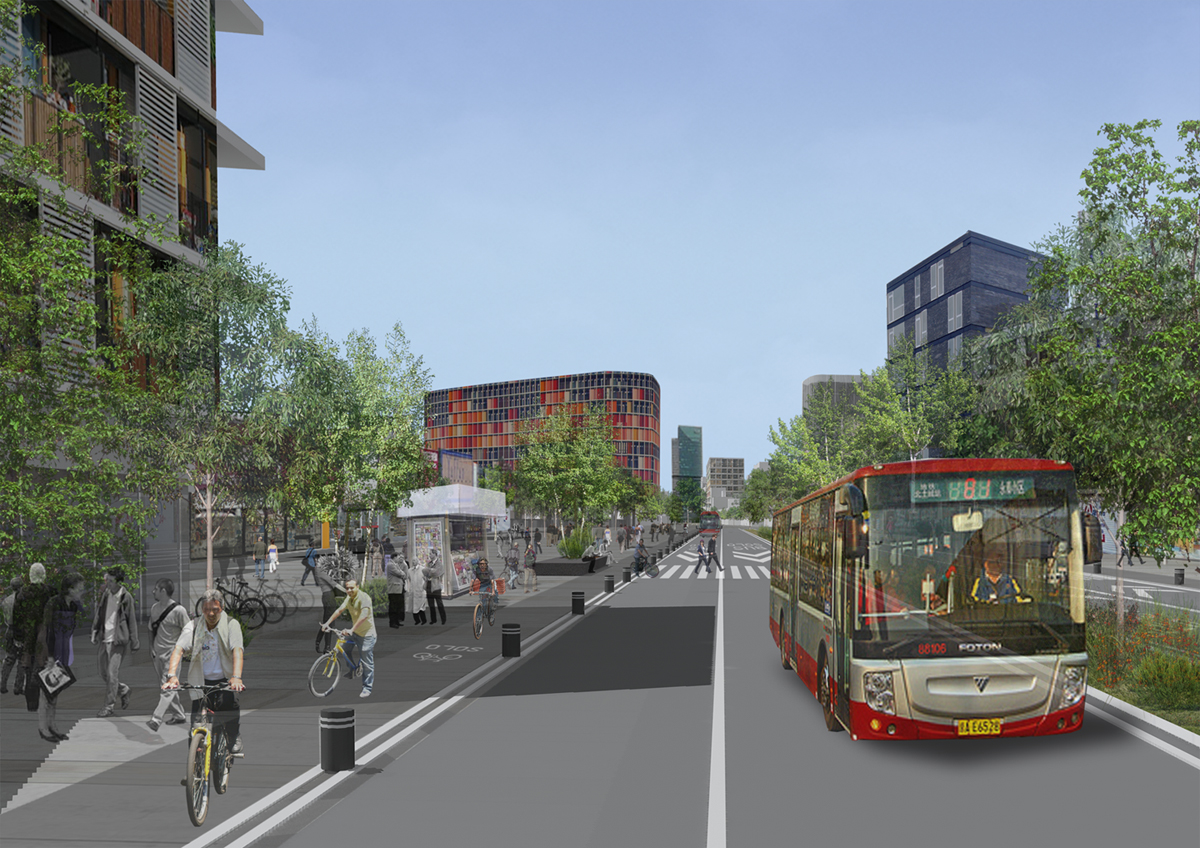
Rio De Janeiro, Brazil -- Fabriqua Arquitetura and CAMPO aud
Problem: The dilapidated area around Rio's beautiful art-deco Central Station, characterized by abandoned industrial spaces, makes getting to the station unappealing for commuters. Meanwhile, residents of the mountaintop favela above have no good access to the station.
Proposal: Make a pedestrian path from the station leading to a public elevator that climbs the mountain to the favela, with access to terraces lined with shops cut into the rock wall. At the same time, convert the traffic-snarled, 16-lane boulevard nearby into an attractive byway for pedestrians, bicycles and BRT.
Before:
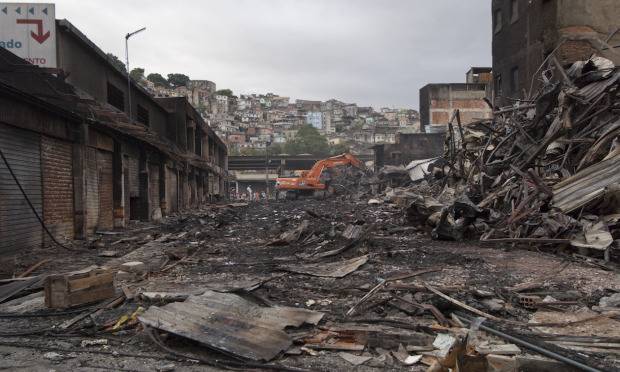
After:
